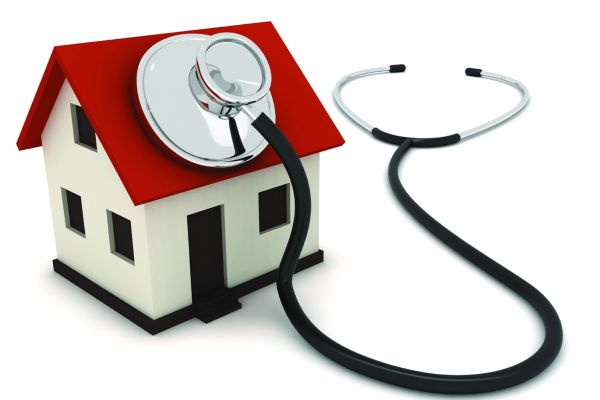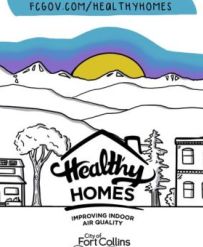Healthy Homes#
Healthy Homes is a free, indoor air quality program for Fort Collins community members that aims to reduce pollutants, enhance energy efficiency, and promote safety. Staff, volunteers, and partner organizations work together to improve the health and home resiliency of all Fort Collins community members.
Healthy Homes es un programa gratuito de calidad del aire interior para miembros de la comunidad de Fort Collins que tiene el objetivo de reducir los contaminantes químicos y biológicos y promover la seguridad. El personal, los voluntarios y las organizaciones asociadas trabajan juntos para mejorar la salud respiratoria de todos los miembros de la comunidad de Fort Collins. Para una evaluación, llame a Selina al 970-224-6129
Concerned about mold?
Mold is a common issue in households. Learn more about the causes, impacts, and solutions for mold by clicking the link below. Please note, the Healthy Homes Program does not test for mold. Testing, if desired, should be conducted through a professional service.
Gift Yourself a Healthy Home#
There are two ways to participate and experience a healthier and safer home:
- Complete an online assessment of your home and receive a personalized set of recommendations on how you can reduce exposure to indoor air contaminants and safety hazards.
- Request an in-home assessment by emailing healthyhomes@fcgov.com or calling 970-416-2832
What can you expect at an in-home assessment? An experienced team of volunteer Healthy Homes Educators will walk with you through your home and identify potential causes of indoor air pollution, safety concerns, and more. You will be left with a personalized set of recommendations, resources such as smoke alarms and portable air cleaners, and the opportunity for additional services such as furnace cleanings and weatherization. Assessments typically take 1-2 hours. All resources and services are free of charge!
Who can participate? In-home assessments are open to all. However, we focus on communities that are disproportionately impacted by climate change and poor air quality. This includes people with respiratory issues, low-income households, seniors, children, people of color, and those that live in mobile home parks.
8 Key Principles of a Healthy Home#
There are 8 key principles that you can follow to make sure your indoor air quality is healthy for you and your family.
Keeping your house clean reduces allergens and fine particles that can irritate your lungs, and it can keep pests away.
- Take your shoes off before entering your home
- Place a commercial grade doormat at all high traffic entrances
- Dust weekly with a damp microfiber cloth
- Vacuum regularly (HEPA filter vacuums are best)
- Reduce clutter
- Don't allow pets on the furniture
Chemicals in the home can harm your respiratory and nervous system. Be aware of these contaminants:
- Radon
- Carbon monoxide
- Tobacco smoke
- Chemical cleaners, air fresheners and candles
- Asbestos and lead
- Household hazardous waste such as paints, pesticides and gasoline
Too much indoor moisture causes mold, structural damage. It also attracts pests.
- Run exhaust fans while you shower and cook
- Look for condensation on windows and wipe it dry
- Regularly check for leaks underneath sinks
- Leave the lid open on your washing machine after you use it
Maintenance ensures the vital systems (ventilation, plumbing and waste management) in your home are in good shape and running efficiently.
Inside your home:
- Check and repair leaks - examine pipes under sinks and in your basement
- Make sure the flues, filters and vents of your heating systems to ensure they are clean and connected properly
- Replace furnace filters regularly with MERV 8-11 filters
Outside the home:
- Clean and unblock your dryer vent every year
- Clean gutters regularly
- Extend downspouts 5 ft away from the home, and make sure the surrounding ground doesn't slope towards the building
Insects and rodents can trigger allergies and asthma and spread disease. Pests seek out food, water, and hiding places.
- Look for evidence of pests, and use non-toxic pest control strategies
- Keep your home free of clutter and as clean as possible
- Store food including pet food in plastic air-tight containers
- Seal exterior gaps and install weatherstripping at the bottom of garage and exterior doors
Proper ventilation helps to reduce a variety of indoor air pollutants
- Open the windows whenever possible
- Make certain exhaust fans and ventilation systems are working properly and venting air to the outside
- Run vent fans when cooking or showering
- Provide extra ventilation when using chemical cleaning products, glues, or paints.
Comfort in homes is all about maintaining thermal control
- Maintain temperature in the home between 65 and 78 degrees
- Maintain relative humidity between 30% and 50%
- Prevent stale air through ventilation and filtration
Be aware of the most common dangers in your home
- Install a smoke and carbon monoxide detector on every floor of your home
- Test smoke and carbon monoxide detectors and replace batteries regularly
- Plan and discuss escape routes and meeting locations in the case of an emergency
- Keep a fire extinguisher where it is easy to reach in case of an emergency
- Keep your house uncluttered and well lit
- Keep pesticides and household cleaners out of the reach of children
- Properly dispose of unused chemicals and paints
More Information#

Find out about the most common indoor air quality issues that can trigger health problems in your home, and what you can do to solve problems for little or no money.

Learn more about indoor air quality to keep you and your family safe and healthy.

